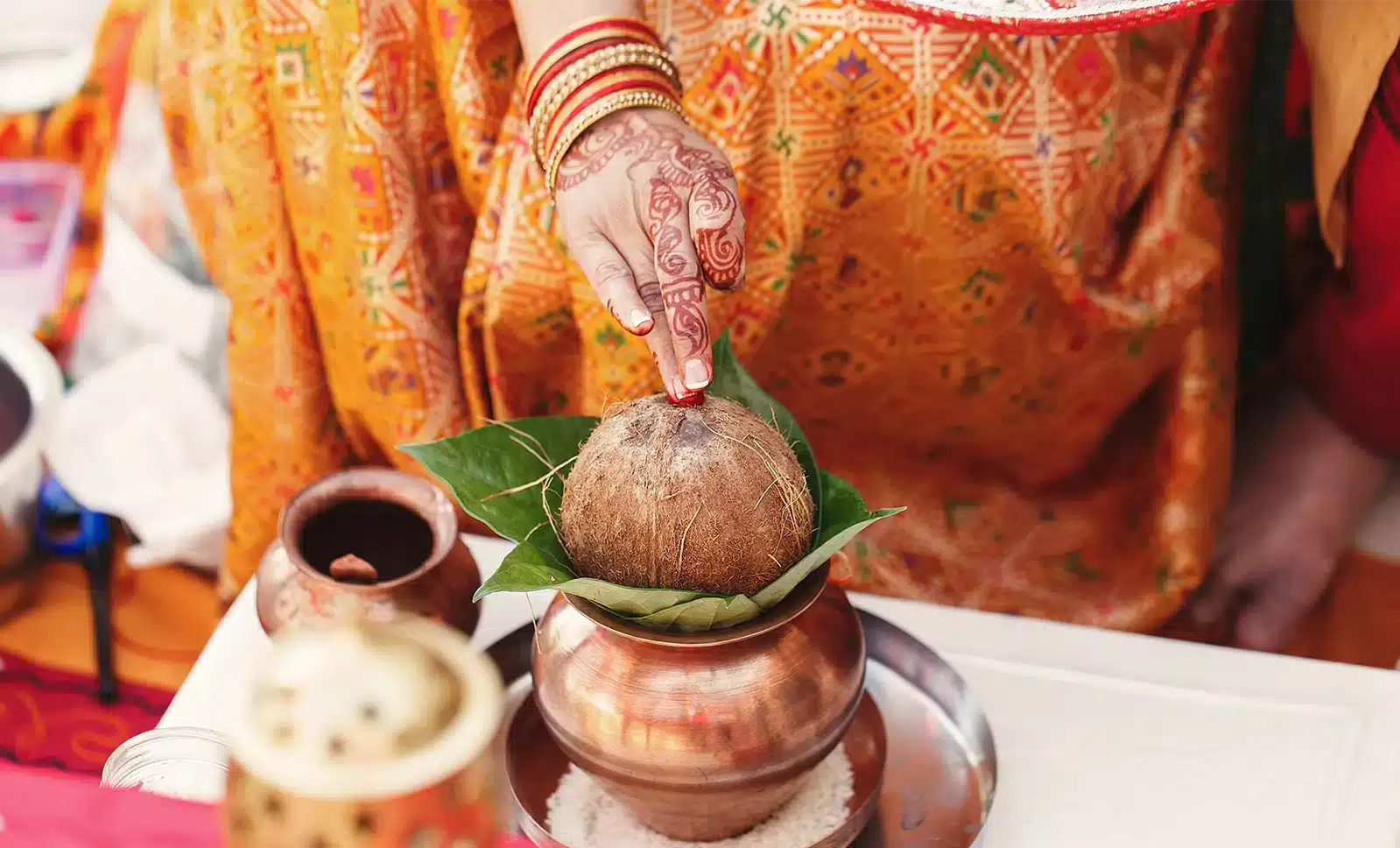
Embark on a fascinating journey through the intricate and joyous Indian wedding
ceremony rituals. From the Roka ceremony to post-wedding traditions, discover the
captivating details and symbolism that make these rituals truly special.
The Roka Ceremony: A Joyous Beginning
The Roka Ceremony marks the formal announcement and acceptance of the
impending nuptials. It signifies the beginning of the union, and the exchange of gifts
and blessings cements the bond between the two families. This ceremony sets the
tone for the entire wedding journey, fostering excitement and anticipation among all
involved.
Tilak and Godh Bharai: Symbolic Gestures of Union
The Tilak Ceremony holds a special place in uniting the families, marking the
acceptance and blessing of the groom by the bride’s side. The adornment of Tilak
becomes a poignant moment, symbolizing the deep-rooted traditions and respect.
Meanwhile, Godh Bharai evokes a sense of joy and inclusivity as the bride is
showered with gifts and love from the groom’s family, setting the stage for mutual
exchange and celebration.
Pre-Wedding Ceremonial Vibrance
The pre-wedding rituals set the stage for a vibrant and lively celebration. With music
and laughter echoing through the air, the Mehendi, Haldi, and Telban ceremonies
infuse the atmosphere with a sense of auspiciousness and tradition. These rituals not
only signify purity and spiritual cleansing but also enhance the festive ambiance,
adding a touch of merriment to the proceedings.
Kalira Ceremony: Symbolism and Tradition
The Kalira ceremony, adorned with bangles and lively celebrations, takes on the
essence of tradition and symbolism. It serves as a joyful reminder of the beautiful
union and is a testament to the cultural heritage that is cherished and passed down
through generations. This ceremony strengthens the bond between the couple and
their families, creating lasting memories filled with laughter and love.
The Grand Indian Wedding Procession
As the wedding procession makes its grand entrance, it brings with it a sense of
festivity and anticipation. The Ghoorchadi ceremony and the welcoming rituals at the
venue symbolize the joyous union of the couple and the coming together of their
families. The vibrant colors and traditional customs create an atmosphere brimming
with joy and celebration.
Post-Ceremony Traditions at Groom’s House
The post-ceremony rituals at the groom’s house are a testament to the depth of
Indian wedding traditions. From the entrance rituals to the symbolic gestures of tying
bangles and exchanging gifts, each ritual carries profound significance and fosters a
sense of unity and prosperity. These rituals serve as a poignant reflection of the
enduring bond between the couple and their families.
Unveiling the Bangle Opening Ceremony
The bangle opening ceremony encapsulates the essence of joy and fun-filled revelry.
Testing the patience and playfulness of the couple and their loved ones, it serves as a
delightful reminder of the cherished moments and laughter shared during the
wedding festivities. This light-hearted ritual adds a touch of exuberance and mirth to
the post-wedding celebrations.
Pakphira Ceremony: A Prosperous Return
The Pakphira ceremony signifies the bride’s return to her mother’s house, brimming
with blessings, gifts, and sweet exchanges. It encapsulates the essence of prosperity
and familial love, symbolizing the hope for a joyous and abundant future for the
newlyweds. This ceremony serves as a heartwarming conclusion to the wedding
festivities, fostering a sense of togetherness and well-being.
Conclusion:
The rich tapestry of Indian wedding ceremonies and rituals is a testament to the
deep-seated traditions and the joyous coming together of families. Each ritual carries
unique symbolism and significance, weaving a beautiful narrative of love, unity, and
celebration
One thought on “A Guide to Traditional Indian Wedding Rituals and Ceremonies”
Felix Meyer
1 year agoI like how well-written and informative your content is. You have actually given us, your readers, brilliant information and not just filled up your blog with flowery texts like many blogs today do.